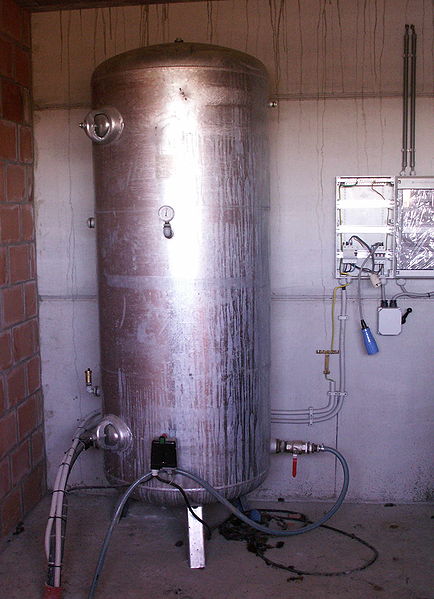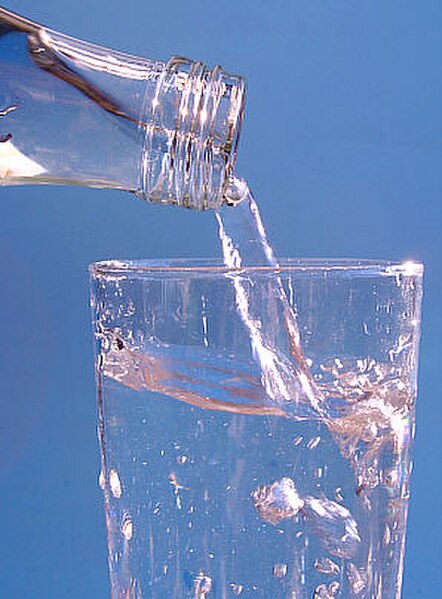A water supply network or water supply system is a system of engineered hydrologic and hydraulic components that provide water supply. A water supply system typically includes the following:A drainage basin
A raw water collection point where the water accumulates, such as a lake, a river, or groundwater from an underground aquifer. Raw water may be transferred using uncovered ground-level aqueducts, covered tunnels, or underground water pipes to water purification facilities.
Water purification facilities. Treated water is transferred using water pipes.
Water storage facilities such as reservoirs, water tanks, or water towers. Smaller water systems may store the water in cisterns or pressure vessels. Tall buildings may also need to store water locally in pressure vessels in order for the water to reach the upper floors.
Additional water pressurizing components such as pumping stations may need to be situated at the outlet of underground or aboveground reservoirs or cisterns.
A pipe network for distribution of water to consumers and other usage points
Connections to the sewers are generally found downstream of the water consumers, but the sewer system is considered to be a separate system, rather than part of the water supply system.

The Central Arizona Project Aqueduct transfers untreated water
Most (treated) water distribution happens through underground pipes known as water mains
Pressurizing the water is required between the small water reserve and the end-user
Clean drinking water is essential to human life.
Water supply is the provision of water by public utilities, commercial organisations, community endeavors or by individuals, usually via a system of pumps and pipes. Public water supply systems are crucial to properly functioning societies. These systems are what supply drinking water to populations around the globe. Aspects of service quality include continuity of supply, water quality and water pressure. The institutional responsibility for water supply is arranged differently in different countries and regions. It usually includes issues surrounding policy and regulation, service provision and standardization.
A girl collects clean water from a communal water supply in Kawempe, Uganda.
Engine room of municipal water works in Toledo, Ohio, 1908
1880s model of pumping engine, in Herne Bay Museum
Cape Town water crisis warning, July 2018








